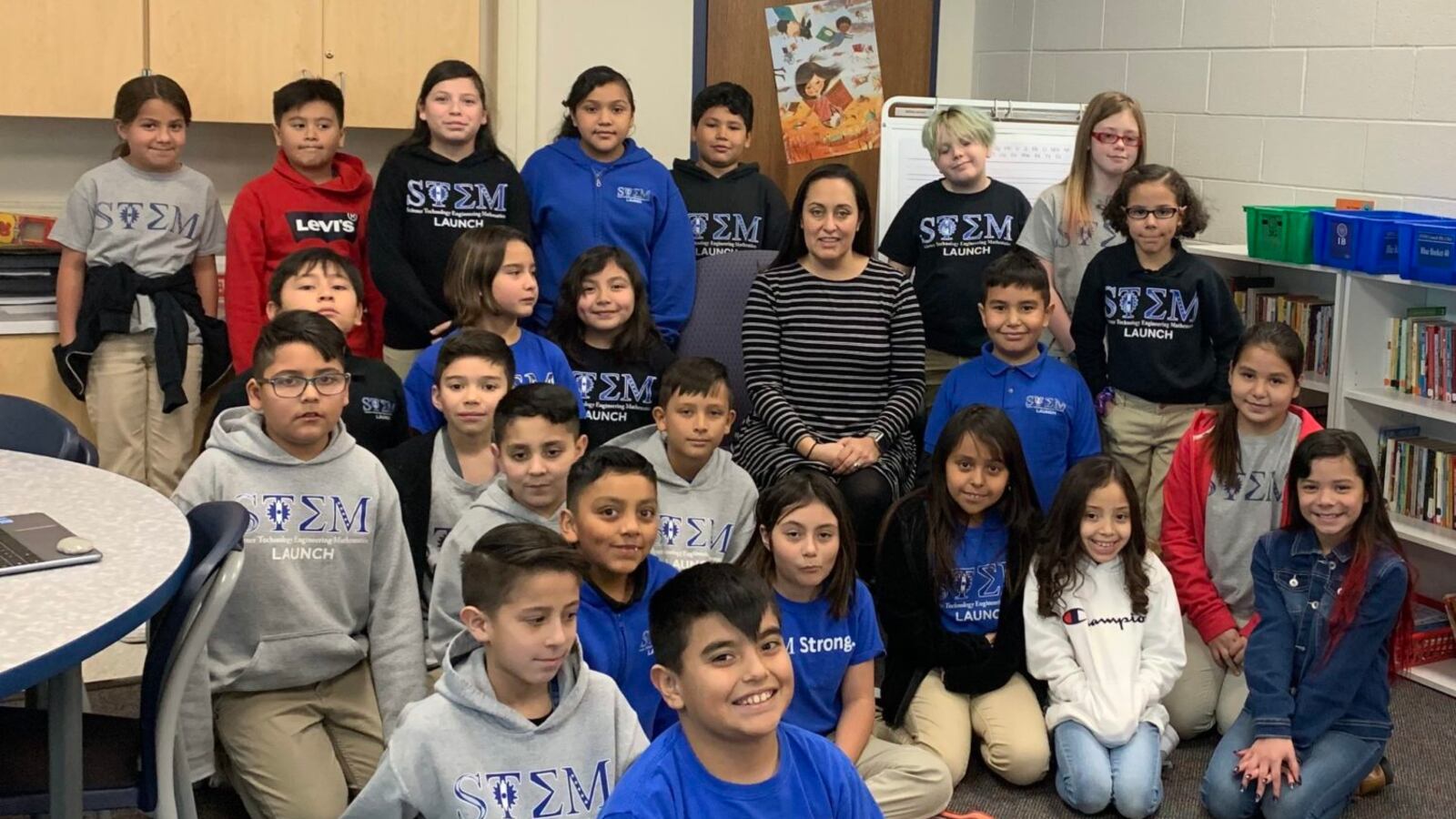Here, in a feature we call How I Teach, we ask educators who’ve been recognized for their work how they approach their jobs. You can see other pieces in the series here.
Rachel Calus makes an effort to notice the little things in her fourth grade classroom. She pays attention to the students who lack the right footwear for a snowy walk to school or don’t have the proper paperwork to receive free lunches. She knows children can’t learn if their basic needs aren’t met.
“They don’t always say something, so I have to be aware,” said Calus, who teaches at STEM Launch K-8 school in the Denver suburb of Thornton.
Calus is one of four Colorado teachers to receive the “2019 Best Should Teach” award from the school of education at the University of Colorado Boulder. She talked to Chalkbeat about her decision to pursue education instead of architecture, why “math monsters” figure into her lessons, and how she got to the bottom of a student’s language struggles.
This interview has been condensed and lightly edited.
Was there a moment when you decided to become a teacher?
When I was young I always thought I wanted to be a teacher, but I was encouraged to pursue other things. I had a fifth grade teacher that convinced me to become an architect. When I started my bachelor’s degree I was enrolled in the architecture program. I only made it a year before I figured it wasn’t for me.
I finished with a degree in psychology, thinking I wanted to be a child counselor. I spent a couple years after college working with nonprofit groups and eventually ended up at a child care center. I fell in love! While I was working as the assistant in the kindergarten room I made the choice to go back to school. I took classes at night to get my teaching license and master’s degree in education.
How do you get to know your students?
I start by sharing things I like to do. We talk about weekend plans and the shows we watch. You can learn a lot about a student by hearing about their after-school activities. I try to make sure I stay current on the things they watch and play. While I am not an expert on Minecraft and Fortnite, I learn by asking questions and taking in interest. Once you find that connection with kids they feel comfortable and are willing to talk more.
Tell us about a favorite lesson to teach. Where did the idea come from?
My favorite lesson to teach is about partial products, which is a method for breaking up multi-digit multiplication problems into smaller pieces. In order to teach the partial products algorithm, we created what we call the math monster. Because there are so many steps, it is easy for kids to mess up.
So, I connect each piece of the problem to a part of the monster. The horns tell us how many parts on each side. The ears tell us how many combinations there are. It becomes a way for them to check their work. When people come in to watch us, they always giggle to hear us talking about horns and ears when we are multiplying.
What’s something happening in the community that affects what goes on inside your class?
I teach in a community where a majority of the students come from low-income families. I worry about their basic needs as well as their academics. I watch for kids who don’t bring a snack. I ask them if they ate breakfast. I make sure they get lunch. While most of our kids receive free and reduced-price lunches, there are always a few that don’t have the correct paperwork turned in. When they get the negative lunch balance statements, I always make sure they get something in the account even if I have to put it in myself.
I pay attention to clothes and shoes. A lot of students walk to school and during the cold winter months, don’t always have what they need to stay warm. Cold wet toes or a hungry belly would keep any kid from learning. They don’t always say something, so I have to be aware.
Tell us about a memorable time — good or bad — when contact with a student’s family changed your perspective or approach.
A couple years ago, I had a student who I was concerned about academically. He was new to our building and our district so we had very little information on him. He had been born in the U.S. and had been continuously enrolled in school. He was making progress but was still really struggling with the English language.
After talking with his parents at fall conferences I learned that his previous education had been mostly in Spanish. It explained why his English proficiency was so low. With this information we were able to change our approach. We are an English-only school, but we were able to pull on the educational background he had from his Spanish-language school. We were able to make connections for him a lot faster. His growth increased and his speed of language acquisition was impressive.
What was your biggest misconception that you initially brought to teaching?
I knew I would become invested in the students I teach, but I had no idea how impactful that would be. I spend more time at home thinking about the well-being of my students and my families than I do lesson planning. After 14 years of teaching I still have students and families I keep in touch with.
What are you reading for enjoyment?
I just finished reading “Sabrina and Corina” by Kali Fajardo-Anstine.
What’s the best advice you’ve received about teaching?
The best advice I received was to treat your custodial staff with the utmost respect. They are the backbone of your building and they are there when you need them the most.


